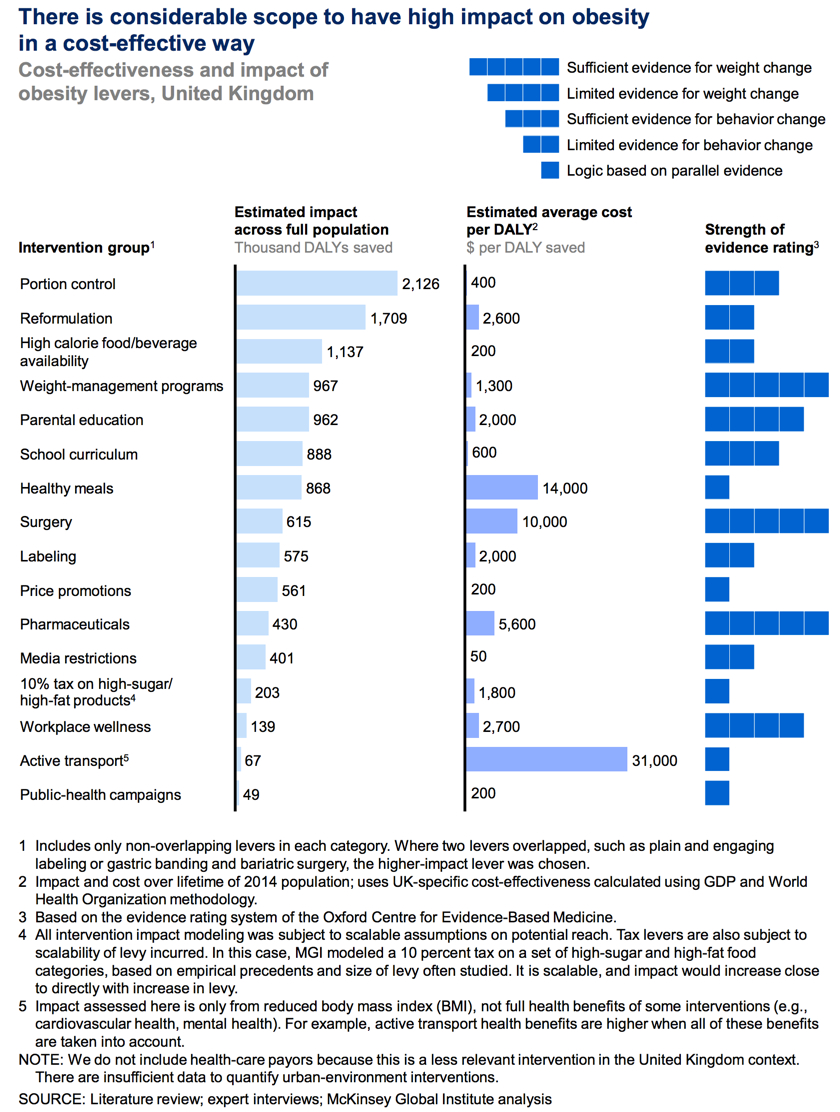Obesity Interventions identified by MGI
74 interventions – across 18 groups – to reduce obesity.

Source: MGI Overcoming Obesity
The main findings of this discussion paper include:
- Existing evidence indicates that no single intervention is likely to have a significant overall impact. A systemic, sustained portfolio of initiatives, delivered at scale, is needed to reverse the health burden. Almost all the identified interventions (exhibit) are cost effective for society—savings on healthcare costs and higher productivity could outweigh the direct investment required by the intervention when assessed over the full lifetime of the target population. In the United Kingdom, for instance, such a program could reverse rising obesity, saving the National Health Service about $1.2 billion a year.
Cost-effective interventions to reduce obesity in the UK

- Education and personal responsibility are critical elements of any program aiming to reduce obesity, but they are not sufficient on their own. Other required interventions rely less on conscious choices by individuals and more on changes to the environment and societal norms. They include reducing default portion sizes, changing marketing practices, and restructuring urban and education environments to facilitate physical activities.
- No individual sector in society can address obesity on its own—not governments, retailers, consumer-goods companies, restaurants, employers, media organizations, educators, healthcare providers, or individuals. Capturing the full potential impact requires engagement from as many sectors as possible. Successful precedents suggest that a combination of top-down corporate and government interventions, together with bottom-up community-led ones, will be required to change public-health outcomes. Moreover, some kind of coordination will probably be required to capture potentially high-impact industry interventions, since any first mover faces market-share risks.
- Implementing an obesity-abatement program on the required scale will not be easy. We see four imperatives:
(1) as many interventions as possible should be deployed at scale and delivered effectively by the full range of sectors in society;
(2) understanding how to align incentives and build cooperation will be critical to success;
(3) there should not be an undue focus on prioritizing interventions, as this can hamper constructive action; and
(4) while investment in research should continue, society should also engage in trial and error, particularly where risks are low.